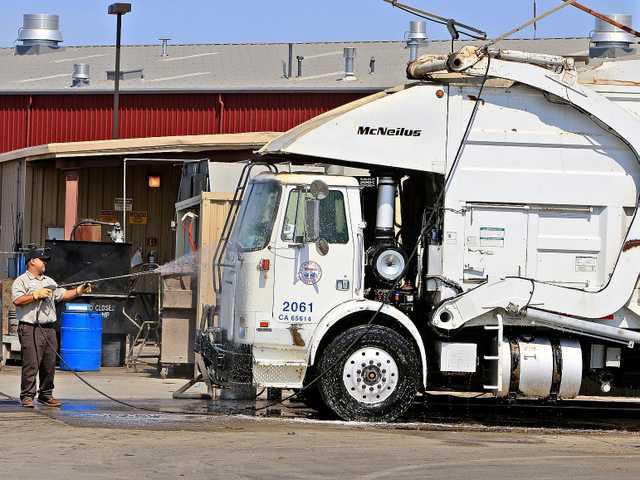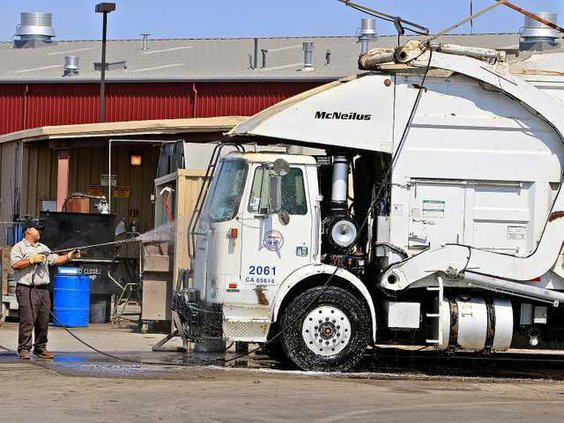Twenty-five years ago during the waning days of old-fashioned garbage cans, a typical Manteca solid waste worker handled just over a little more than 350 residential pickups on a typical work day.
That involved getting out of the truck at each stop and picking up cans and manually dumping them in the back.
The switch to automated arms operated by joy sticks and carts in the mid-1990s pushed the number of homes a driver could do in a typical shift to around 750.
Today, thanks to part of the overall strategy to start converting food waste into compressed gas that will eventually power solid waste collection trucks, a typical route driver now services 1,150 homes a day. That is due in a large part to having to take garbage to the Lovelace Transfer Station where the food waste separating equipment is being installed two miles north of Lathrop Road off of Union Road instead of east of Stockton Airport at the landfill on Austin Road north of French Camp Road.
When the city started exploring the switch to Lovelace, the expectation was the number of homes a given route driver could handle would jump from 750 to 975 per shift. Instead it leaped to 1,150.
Not only has mileage been drastically reduced but the actual dumping of garbage is taking place quicker and with less wear and tear on city solid waste trucks. At the landfill they had to drive along temporary dirt roads in all sorts of conditions to reach the point where their loads could be tipped. At Lovelace, they back up to what is essentially a dock and dump their load without having to leave pavement.
That is also allowing the city to reduce maintenance and fuel costs.
Commercial solid waste drivers service about 90 businesses a day.
The solid waste division also has two street sweepers that clean Manteca streets twice each month. They sweep an average of 1,800 miles of streets each month using 80 gallons of water per month.
The switch away from landfill dumping and the pending move to compressed natural gas is also expected to enhance Manteca’s ability to squeeze more life out of solid waste trucks than can run as high as $400,000 each.
The industry standard for running garbage trucks is seven years. Eighteen of the 27 city solid waste trucks that are used on a regular basis have been on the streets beyond the industry average. Several are 15 years old.
The city currently has four trucks that run on compressed natural gas. Eventually the entire fleet will be converted.
The City Council in April approved the purchase of four new solid waste trucks — all powered by compressed natural gas — for $1,410,000.
That will allow the replacement of:
uone front loader used on commercial routes to tip bins for $360,000.
utwo side loaders primarily on residential routes to tip carts for $400,000 apiece.
uone roll-off truck that collects the large open top dumpsters used for major clean ups for $250,000.
You may not see the trucks on city streets for 18 months to two years. That’s due to the backlog of orders as demand has jumped for CNG powered solid waste collection trucks to meet California’s tightening air quality standards.
The city will take delivery just about the same time as the food waste to fuel system becomes operable. Manteca will use the compressed gas that process produces to eventually power all 24 solid waste trucks that currently run on diesel.
To contact Dennis Wyatt, email dwyatt@mantecabulletin.com
Route drivers service 1,150 homes a day





